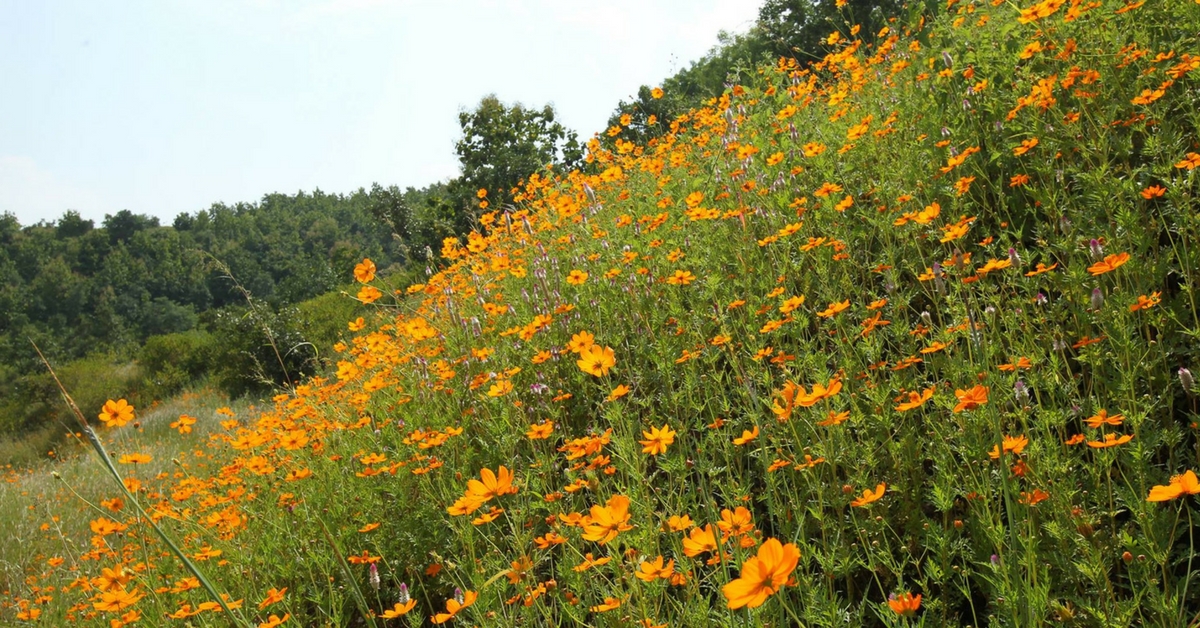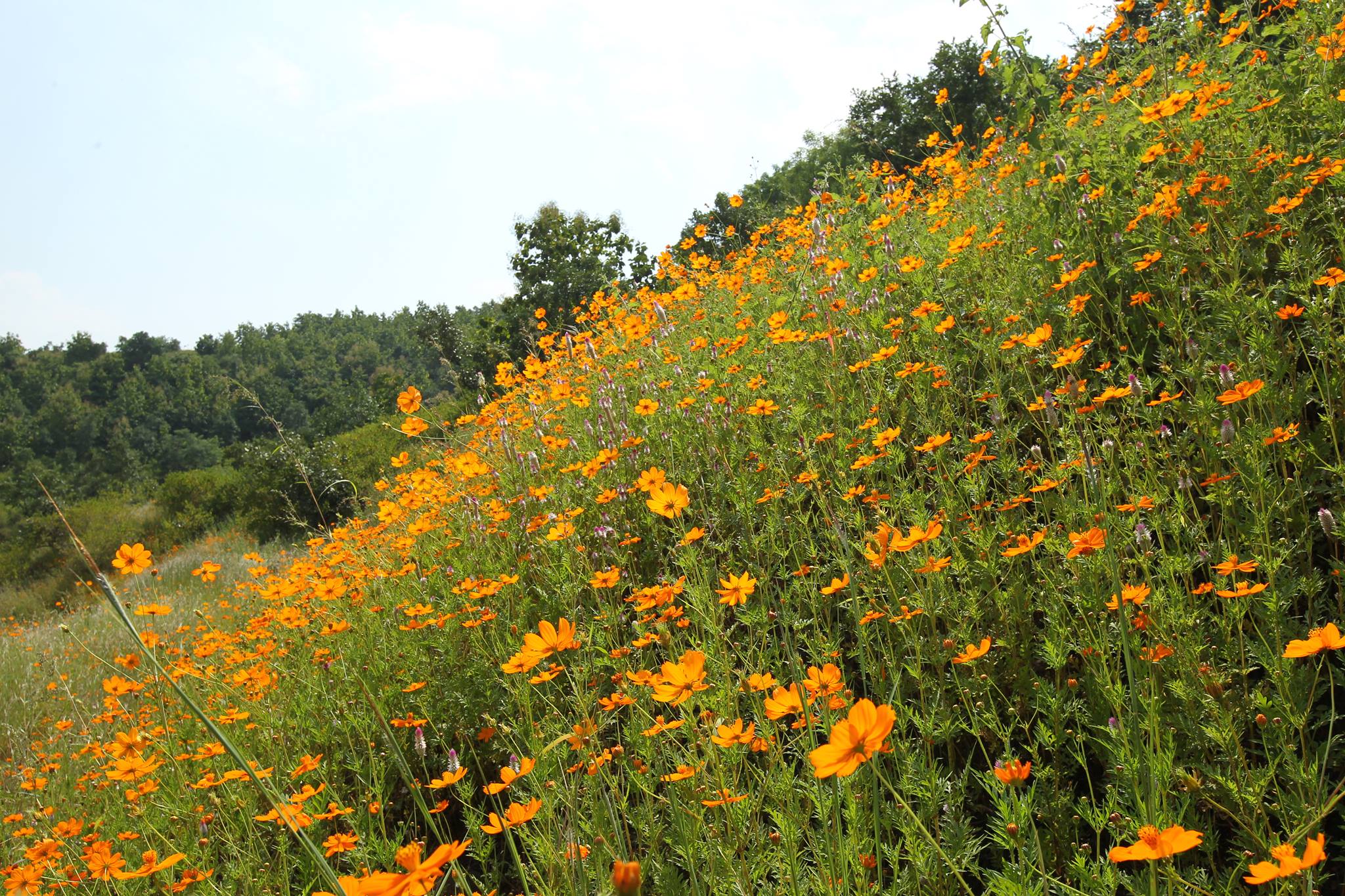Here’s How One Nagpur Businessman Created a Natural Paradise From Barren Hills
Manohar Tarkunde planted over ten lakh neem, Gulmohar, teak and sandalwood trees after studying the biodiversity of the area, of which seven lakh survived.

A 110 km from Nagpur, Maharashtra, away from the scorching heat of the city, is a man-made hill station in Multai district of Madhya Pradesh.
Once a mere barren hill, this eco-agro tourism site has over 7 lakh trees today, thanks to the effort of Nagpur-based businessman Manohar Tarkunde.

The story traces back to the time when Manohar’s company engaged in civil infrastructure construction and had to built the Irai dam in in Chandrapur district. The construction led to the uprooting of at over 1.5 lakh trees. “This gave me sleepless nights and I promised myself that I would plant more than double the number of trees one day,” he told the Times of India.
This dream turned into reality when he came in possession of a 275-acre plot at Multai. Being interested in ago tourism, he decided to create a hill station.
“This location was perfect as it is 2,450 above the sea level. What also intrigued me was that though everywhere the wind blows from South to North, here it is reverse as it blows from North to South throughout the day,” he said.
Read more: How 3 All-Women Farmer Service Companies Are Empowering Over 2,756 Farmers in Vikarabad!
The hills that were once covered with dense teak forests were stripped of its green cover by extensive felling by locals. Manohar planted over ten lakh neem, Gulmohar, teak and sandalwood trees after studying the biodiversity of the area, of which seven lakh survived.
Over 50 acres of Malhara has been utilized to plant varieties of mango, guava, avocados, blueberry, gooseberry, star awala, passion fruit and olive trees. This natural farming is free of chemical fertilizers and pesticides.
Using the ‘zero budget’ system of agriculture under the guidance of Padma Shri awardee Subhash Palekar and Hemant Chauhan, the manure used is made from the raw cow dung of desi cows reared at a nearby cowshed.
The growing green cover over the last three years has sheltered various species of birds and wildlife. There have been numerous sightings of peacocks, rabbits, wild boars, nilgai and chinkara.

To ensure eco-friendly development, the construction material utilized includes mud and ash bricks which require energy-efficient production.
Their watershed management technique on the lines of Shirpurkar pattern involves utilizing rain water, by digging trenches to collect it and allowing it to run underground. This has helped raise groundwater table from 73 meters seven years ago to 83 meters now.
A water reservoir created provides over 8,000 cubic meters of water for the plantations using gravity flow-drip irrigation.
The hill station utilises solar and wind power to generate electricity.

“There are 20 solar lights and we keep adding to that number and the windmill generates 1.25kW per hour which gives 24 hours supply to the three buildings constructed here by us,” shares Manohar.
A butterfly park with over ten varieties has been developed to promote floral and faunal diversity. And a five km natural trail for walks and jogs is underway.
The site is certainly an inspiration for us all.
You can help livelihood too. Here’s how:
Plant a Tree and Gift a Living is an attempt by The Better India along side NAATA Foundation to plant 5000 fruit trees in Aarey Milk Colony, Mumbai. Each of these saplings need an approximate amount of Rs 100 for their nourishment over the next 2-3 years, after which they will be sufficient to supplement the income of the community by adding an additional source of livelihood, while also restoring the green cover of the area.
Contribute for the campaign here.
Unable to view the above button? Click here
Like this story? Or have something to share?
Write to us: [email protected]
Connect with us on Facebook and Twitter.
NEW: Click here to get positive news on WhatsApp!
If you found our stories insightful, informative, or even just enjoyable, we invite you to consider making a voluntary payment to support the work we do at The Better India. Your contribution helps us continue producing quality content that educates, inspires, and drives positive change.
Choose one of the payment options below for your contribution-
By paying for the stories you value, you directly contribute to sustaining our efforts focused on making a difference in the world. Together, let’s ensure that impactful stories continue to be told and shared, enriching lives and communities alike.
Thank you for your support. Here are some frequently asked questions you might find helpful to know why you are contributing?


This story made me
-
97
-
121
-
89
-
167











